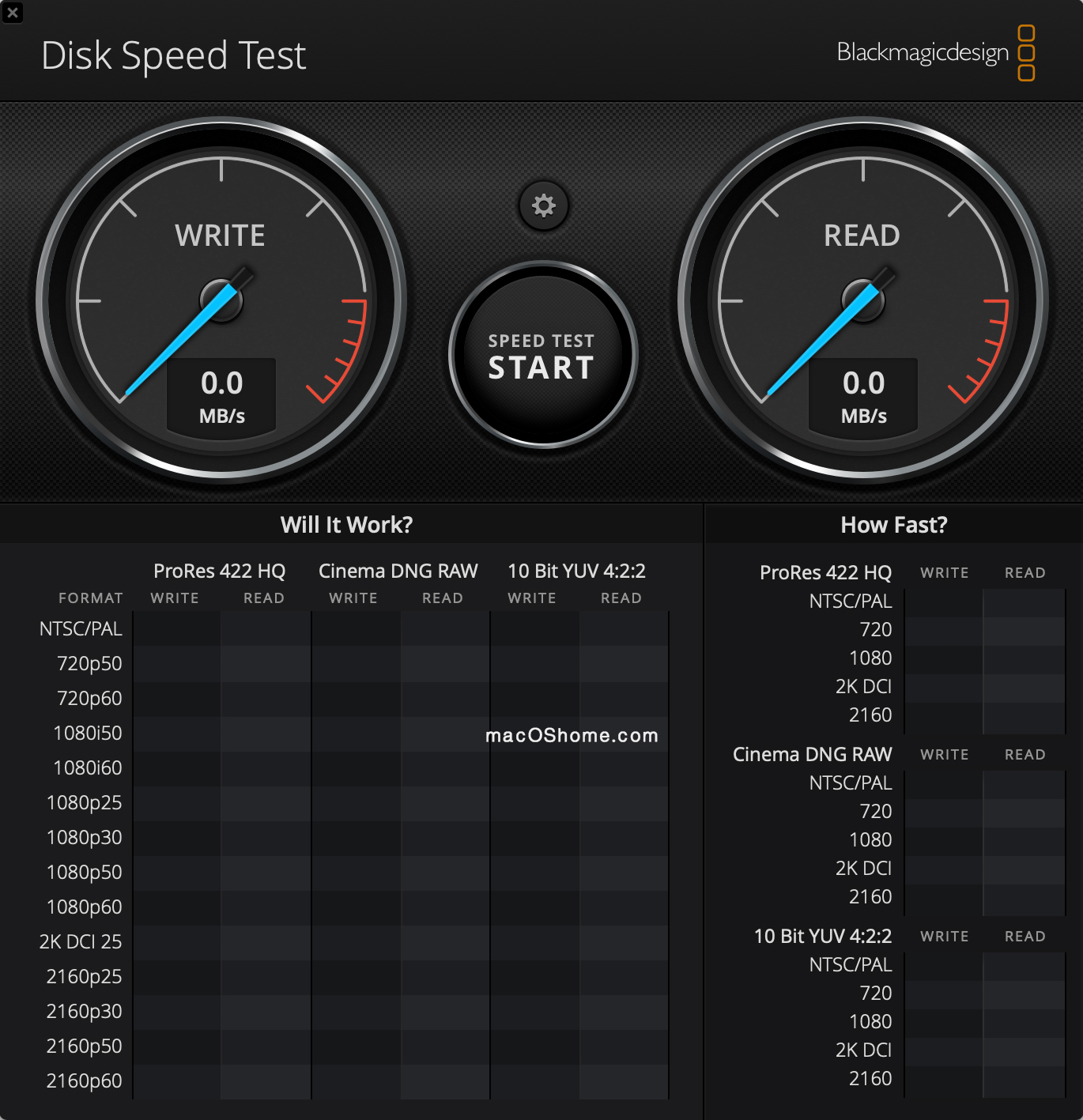

#Blackmagic disk speed test plus
I do wish Samsung offered a 512GB option for this version of the EVO Plus line. These are U1, V10 class cards and may not perform as well as the 128GB and 256GB (our version) due to the U3, V30 classification of the 128 and 256GB cards. It is important to note that the 32GB and 64GB versions of the Samsung EVO Plus SDXC have different specs. It still performed very well and within its advertised speeds. The Lexar is just a tick faster than the Samsung EVO Plus SDXC, but that doesn’t make it a bad card. I have been using a Lexar 1066x SDXC in my Sony A7iii, and it works perfectly. The write operation was completed in 28-seconds. I was able to capture 32 images in about 8-seconds before the camera stopped capturing photos. I’m comfortable concluding that these numbers bring us close enough to the advertised “Up To” numbers.įor a quick and dirty test, I set my Sony A7iii to RAW and Continuous Shooting, and here’s what I got. This is likely due to the hardware limitations of the SD card reader on the Satechi hub. I also ran these same tests using the same benchmark programs using the built-in SD card reader on my Satechi hub, and the speeds were significantly slower. Below are the results from each of these tests: ATTO Disk Seq Read 126 MB/s ATTO DISK Seq Write 117 MB/s DiskMark 2.2 Seq Read 124 MB/s DiskMark 2.2 Seq Write 112 MB/s Blackmagic Disk Speed Test Seq Read 125 MB/s Blackmagic Disk Speed Test Seq Write 112 MB/s I used Blackmagic Disk Speed Test, ATTO Disk Benchmark, and DiskMark.

#Blackmagic disk speed test mac
Using the Lexar Multi-Card 2-in-1 USB 3.1 card reader, I ran three benchmark programs on my 2021 Mac mini. The Samsung EVO Plus SDXC is rated at up to 130MB/s transfer speeds. But the added features do make the Samsung EVO Plus SDXC a lovely card to have in your bag. Overall, there’s nothing spectacular in terms of looks and aesthetic design.

In addition, the Samsung EVO Plus SDXC comes with a host of features that make it worth having in your bag. The lock button is on the side, just like every SD card, and on the back are the brass connectors that connect to your device for the card to work. This is also not unique, there are other SD cards in this color, but most prefer black. Most SD cards have black casings, but Samsung chose white. The size and shape of the Samsung EVO Plus SDXC are the same as every other SD card out there. SD card design has remained the same for a very long time, which makes sense since this is a format that is made to be interchangeable across devices.


 0 kommentar(er)
0 kommentar(er)
